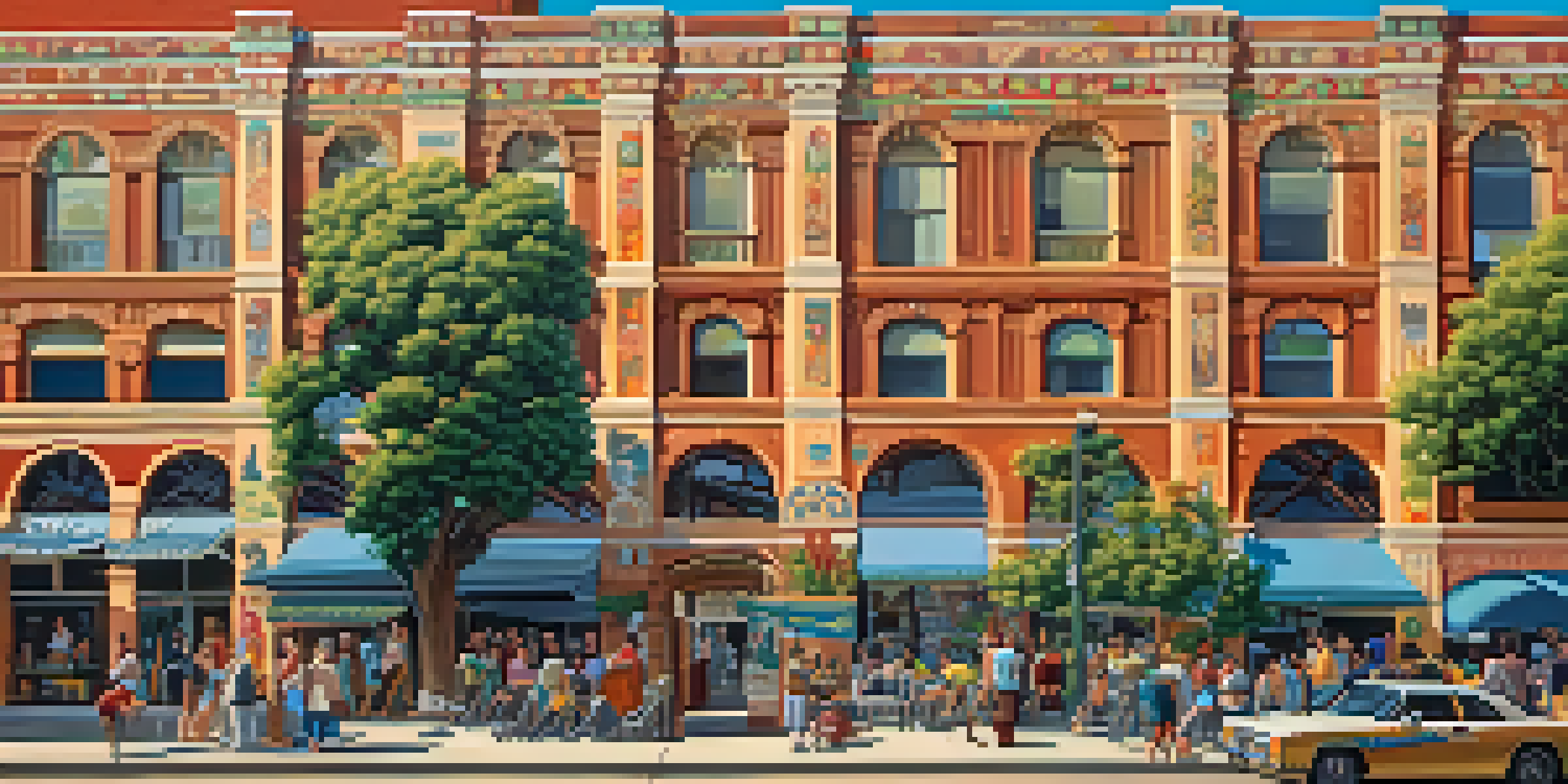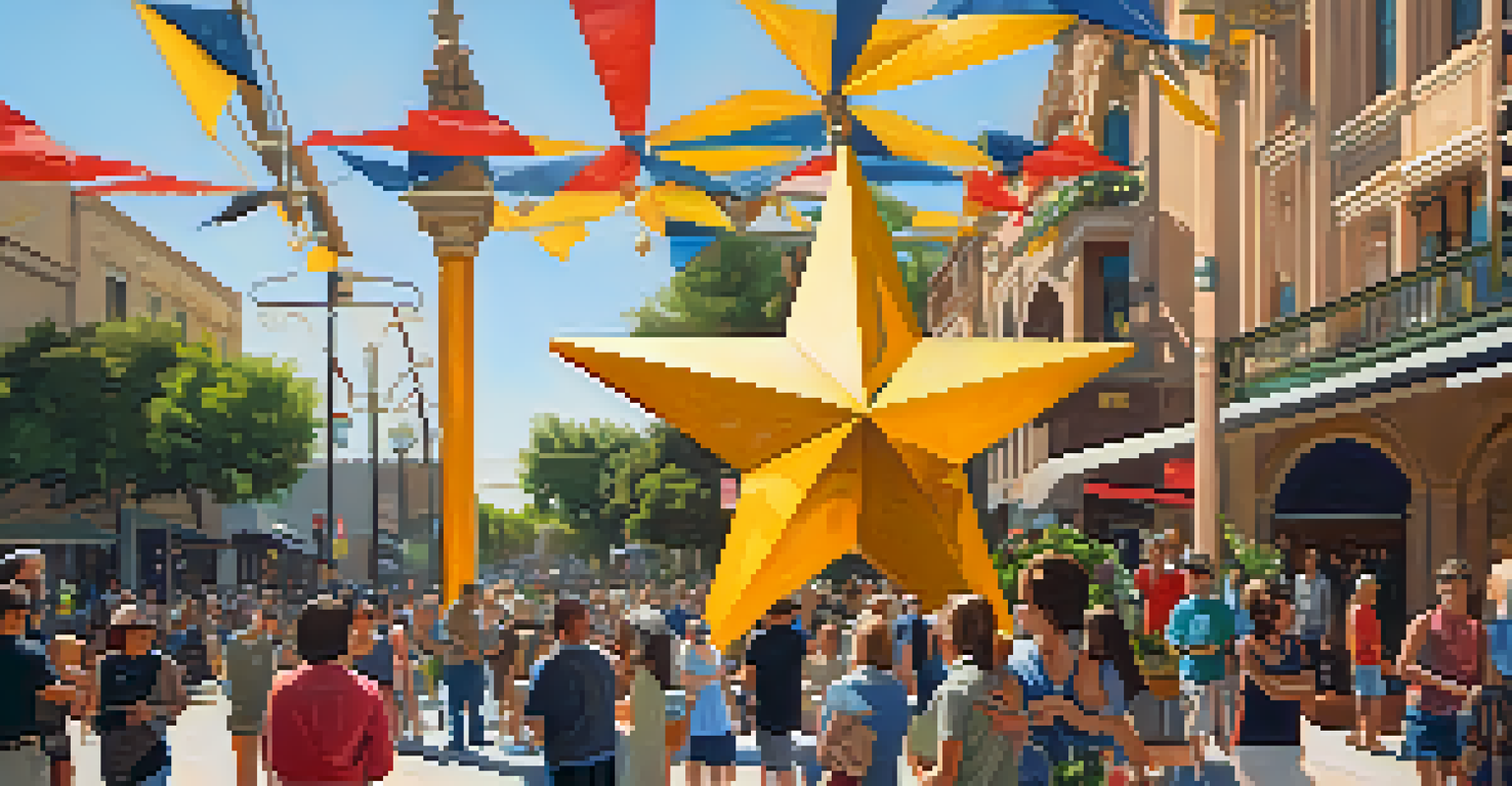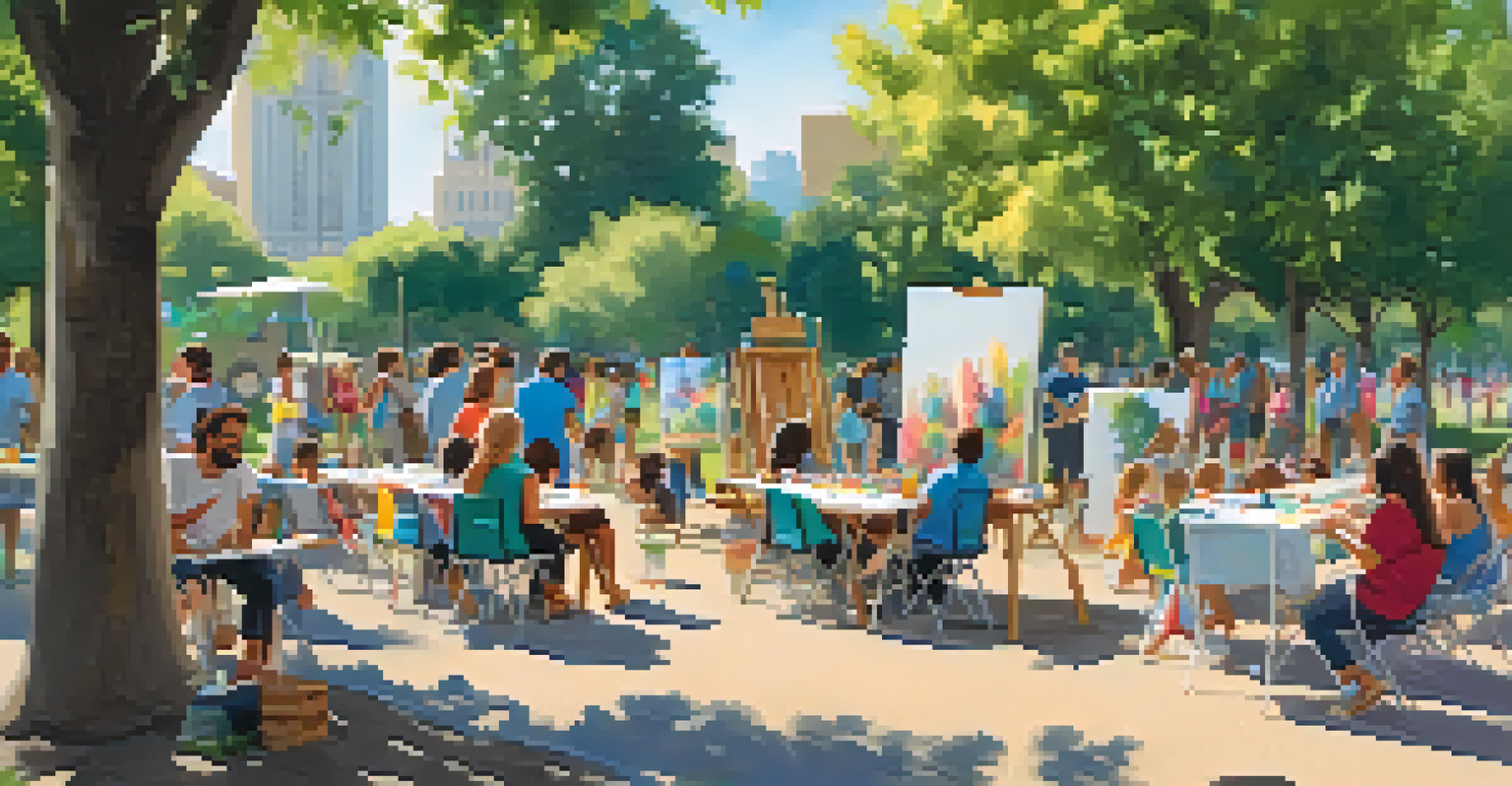The History Behind Pasadena's Public Art Installations

The Origins of Public Art in Pasadena
Pasadena's public art journey began in the late 19th century, when the city embraced its identity as a cultural hub. Artists and philanthropists recognized the need to beautify public spaces, leading to the installation of the first significant artworks. These early initiatives laid the groundwork for a community that values artistic expression and civic pride.
Art is the most beautiful of all lies.
As the city developed, so did its commitment to integrating art into everyday life. The early 1900s saw murals and sculptures appearing in parks and plazas, inviting residents and visitors to engage with art in a communal setting. This approach fostered a sense of belonging and encouraged local artists to contribute their talents.
By showcasing artwork in public spaces, Pasadena not only enhanced its visual landscape but also created a dialogue between art and community. This initiative marked the beginning of a rich tradition that continues to evolve, shaping how residents experience their city.
The Role of the Pasadena Arts Council
In 1973, the Pasadena Arts Council was established to promote and support the arts within the city. This organization played a pivotal role in advocating for public art projects, funding, and resources for artists. Through its efforts, the council has helped to launch numerous initiatives that have transformed Pasadena's artistic landscape.

One of the council's most impactful projects has been the Pasadena Public Art Program, which aims to enhance the city's cultural identity through diverse art installations. By collaborating with local artists, the program has brought a variety of artistic styles and mediums to public spaces, reflecting the community's unique character.
Public Art's Community Roots
Pasadena's public art began in the late 19th century, fostering community pride and artistic expression through collaborative installations.
The Arts Council's commitment to public art has not only elevated the city's aesthetic but has also encouraged community engagement. Their initiatives have sparked conversations about the role of art in society and its ability to inspire and connect people from all walks of life.
Iconic Installations and Their Stories
Pasadena is home to several iconic public art installations that tell the city's story. One standout piece is 'The Colorado Street Bridge' mural, which captures the history and beauty of this architectural marvel. This mural has become a beloved symbol of Pasadena, drawing visitors and locals alike to appreciate its artistry.
Public art is a mirror reflecting the community’s values and aspirations.
Another notable installation is the 'Pasadena Star,' a dazzling metal sculpture that reflects the city’s vibrant spirit. Located in the heart of Old Town, it serves as a gathering point for community events and celebrations, reinforcing the idea that art is meant to be shared.
These installations not only beautify the city but also provide a sense of place and identity for residents. They remind us of Pasadena's rich heritage and the importance of preserving and celebrating artistic expression in public spaces.
Community Engagement Through Art
Public art in Pasadena goes beyond mere aesthetics; it serves as a catalyst for community engagement. Many installations are the result of collaborative efforts between artists and residents, ensuring that the artwork reflects the community's values and aspirations. This collaborative spirit fosters a sense of ownership and pride among locals.
Artistic workshops and events often accompany new installations, inviting community members to participate in the creative process. These initiatives not only educate but also empower residents to express their ideas and stories through art. This engagement strengthens community bonds and promotes a deeper appreciation for the artistic endeavors around them.
Tourism Boost from Art Installations
Public art in Pasadena has become a major attraction for tourists, driving economic growth and supporting local businesses.
By involving the community, Pasadena’s public art installations become more than just decorations; they evolve into living expressions of the collective identity. This interaction between art and community is vital for fostering a vibrant cultural scene.
The Impact of Public Art on Tourism
Pasadena's public art installations are not just local treasures; they have become significant attractions for tourists. Visitors often seek out these artistic landmarks, enhancing the city's reputation as a cultural destination. This influx of tourism supports local businesses and fosters economic growth in the area.
Art walk events and guided tours showcasing public art have gained popularity, providing tourists with curated experiences that highlight Pasadena's artistic heritage. These initiatives create opportunities for storytelling, allowing visitors to connect with the art on a deeper level.
The economic benefits of public art extend beyond tourism; they also encourage investment in local arts initiatives. As the city’s public art scene flourishes, so does its appeal to artists, residents, and tourists alike, creating a dynamic cultural ecosystem.
Challenges Faced by Public Art Programs
While Pasadena has a vibrant public art scene, it does face challenges that can hinder the growth of its programs. Funding constraints are a significant issue, as public art projects often rely on grants and donations. Budget cuts can lead to reduced resources, making it difficult to maintain or expand existing installations.
Another challenge is the need for ongoing community support and engagement. As public art is a reflection of the community, it is essential for residents to voice their interests and preferences. If the community does not feel represented in the art, it can lead to disconnect and diminished appreciation.
Future of Art Emphasizes Diversity
The future of public art in Pasadena is set to embrace inclusivity and technology, reflecting diverse cultural narratives and enhancing viewer engagement.
Navigating these challenges requires collaboration and creativity. By fostering partnerships between artists, community members, and local organizations, Pasadena can continue to cultivate a thriving public art scene that resonates with its diverse population.
The Future of Public Art in Pasadena
Looking ahead, Pasadena's public art landscape is poised for exciting developments. With a growing emphasis on inclusivity and diversity, future installations are likely to reflect a wider array of cultural narratives and experiences. This evolution will enrich the community's artistic tapestry and promote a greater understanding of different perspectives.
Technological advancements also offer new avenues for public art, with interactive installations becoming increasingly popular. These artworks invite audience participation, creating a dynamic relationship between art and viewer that enhances the overall experience.

As Pasadena continues to embrace its artistic legacy, the future of public art looks bright. By prioritizing community engagement and innovation, the city can ensure that public art remains a vital part of its identity, inspiring generations to come.